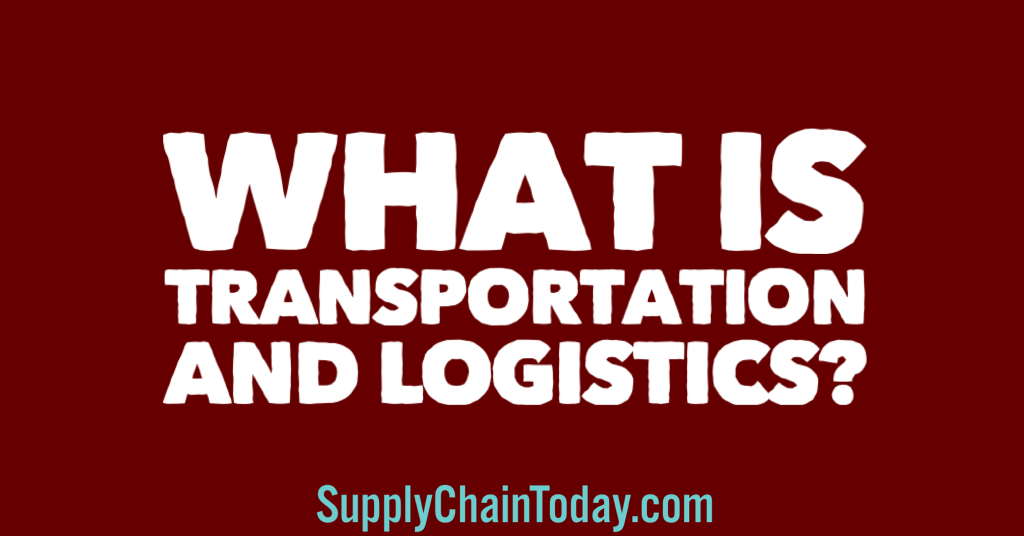What is Transportation and Logistics?
Transportation and logistics refers to the process of planning, coordinating, and managing the movement of goods, services, and information from one place to another. It is a critical aspect of supply chain management, as it helps organizations ensure that products and materials are delivered to the right place at the right time. We will discuss the importance of transportation and logistics and the steps involved in the transportation and logistics process.
First, let’s talk about why transportation and logistics is important. Effective transportation and logistics helps organizations reduce costs, improve efficiency, and increase customer satisfaction. It also plays a key role in global trade, as it enables the movement of goods and materials between countries and regions.
Now let’s go over the steps involved in the transportation and logistics process.
- Planning: The first step in transportation and logistics is to develop a plan for the movement of goods, services, and information. This may involve identifying the most efficient routes, selecting the appropriate mode of transportation, and coordinating with suppliers and customers.
- Coordination: Once the transportation and logistics plan has been developed, the next step is to coordinate the various activities involved in the movement of goods, services, and information. This may involve coordinating with carriers, customs brokers, and other third parties.
- Execution: After the plan has been coordinated, the next step is to execute the transportation and logistics plan. This may involve loading goods onto trucks, ships, or planes, and tracking their movement to ensure that they are delivered to the right place at the right time.
- Performance measurement: The final step in the transportation and logistics process is to measure the performance of the transportation and logistics system. This may involve tracking delivery times, identifying bottlenecks or constraints in the system, and analyzing the cost-effectiveness of different transportation and logistics options.
In conclusion, transportation and logistics is a crucial aspect of supply chain management that helps organizations move goods, services, and information efficiently and effectively. By following the steps outlined in this article, you can improve your transportation and logistics process and better meet the needs of your customers and other stakeholders.
Pros and Cons of Transportation and Logistics
Transportation and logistics has several potential benefits, including:
Pros:
- Improved efficiency: Effective transportation and logistics can help optimize the movement of goods, services, and information, reducing waste and increasing efficiency.
- Reduced costs: By selecting the most efficient routes and modes of transportation, organizations can reduce transportation and logistics costs.
- Increased customer satisfaction: By delivering products and materials on time and in good condition, organizations can improve customer satisfaction and reduce the risk of lost sales.
However, transportation and logistics also has some potential drawbacks, including:
Cons:
- High costs: Transportation and logistics can be expensive, particularly for long distances or specialized equipment.
- Complexity: Coordinating the various activities involved in the transportation and logistics process can be complex, particularly for large or diverse organizations.
- Environmental impact: The transportation of goods can have negative environmental impacts, such as air pollution and carbon emissions.
- Risk of delays: The transportation and logistics process can be subject to delays due to factors such as weather, traffic, or equipment failure.
Transportation and Logistics Cost Savings
There are several ways that companies can save money on transportation and logistics:
- Optimizing routes and schedules: By choosing the most efficient routes and schedules, a company can reduce the distance traveled and the time required to complete a trip, which can save money on transportation costs.
- Consolidating shipments: Combining multiple shipments into a single load can reduce the number of trips and lower transportation costs.
- Leveraging technology: Using technology such as transportation management systems (TMS) and GPS tracking can help to optimize routes and improve efficiency, which can reduce costs.
- Partnering with other companies: Collaborating with other companies or organizations can help to share the costs and benefits of transportation and logistics. For example, companies can join forces to fill empty or partially empty trucks (a practice known as “backhauling”), or they can work together to negotiate better rates with carriers.
- Using intermodal containers: Intermodal containers, which can be transferred between different modes of transportation without being unloaded, can reduce handling and loading costs and improve efficiency.
- Optimizing warehouse and inventory management: Streamlining warehouse and inventory management can help to reduce lead times and improve the efficiency of the supply chain as a whole.
By implementing these strategies, a company can save money and improve the efficiency of its transportation and logistics operations.
Train by Primary SCM Process
- Plan it: What is Supply Chain Planning and Strategy?
- Buy it: What is Supplier Management and Procurement?
- Store it: What is Distribution, Warehouse and Inventory Management?
- Make it: What is Manufacturing?
- Ship it: What is Transportation, Logistics and Shipping?
- Return it: What is Return and Reverse Logistics?
